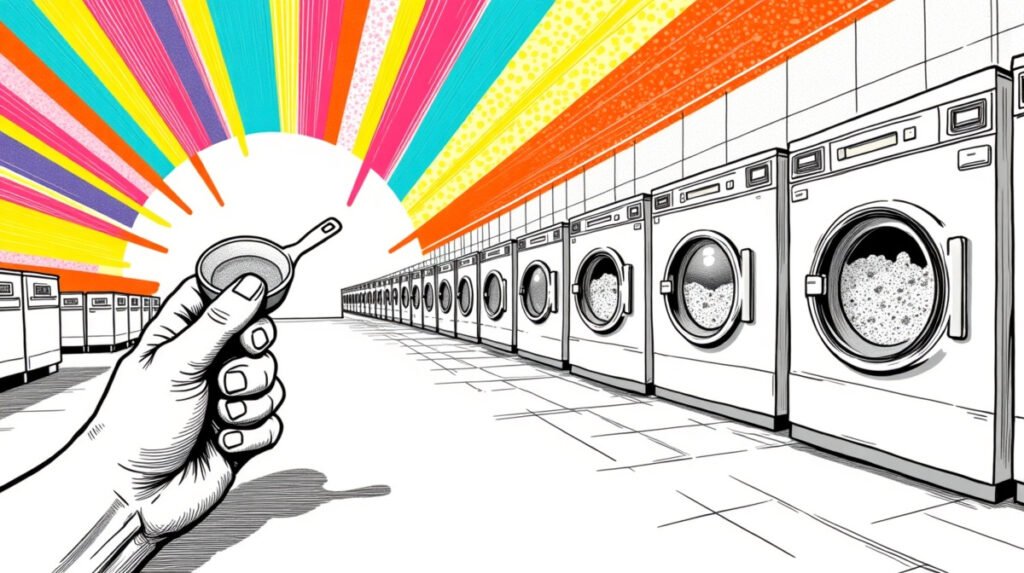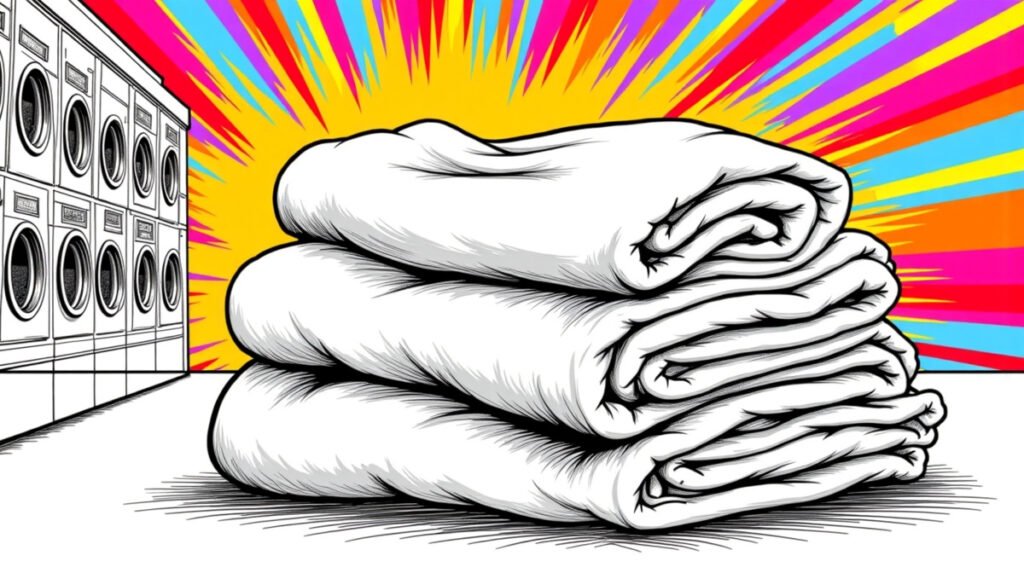If you pour laundry detergent until the cap is full, you might be surprised to learn you’re likely using far too much. It’s a common mistake, driven by misleading packaging and the belief that more suds equal a better clean. In reality, using too much detergent can leave your clothes dirty, damage your washing machine, and irritate your skin.
This guide provides a simple, research-backed answer to how much detergent you should actually use for cleaner clothes and a longer-lasting washer.

Signs You Are Using Too Much Detergent
How can you tell if you’re overdosing on detergent? Here are a few common signs:
- Stiff, Scratchy Fabrics: Excess soap residue doesn’t rinse out, leaving clothes feeling hard and uncomfortable.
- Dull, Faded Colors: The soap film left behind can trap dirt and dull the appearance of your laundry.
- A “Sour” or Musty Smell from Your Washer: Leftover suds create a breeding ground for mold and mildew inside the machine’s drum and hoses.
- Skin Irritation: The residue left on clothes and bedding can be a common trigger for sensitive skin.
- Visible Soap Residue: You might see white streaks or clumps on your clothes or a chalky buildup inside the machine.
Why Using Too Much Detergent is Bad
Overusing detergent is counterproductive. High-efficiency (HE) washing machines, in particular, use very little water.
As leading appliance manufacturers like Whirlpool explain, excess suds cushion the clothes, preventing them from rubbing against each other, the very friction that helps remove dirt. The machine may also struggle to rinse away the suds, leaving behind a sticky residue that attracts more dirt.
The Golden Rule: How Much Detergent to Actually Use
For a normal-sized load of laundry (about 8 pounds) in a standard or HE machine, you only need 1 to 2 tablespoons of liquid detergent.
is baseline amount can be adjusted based on four key factors:
1. Machine Type (HE vs. Standard)
- High-Efficiency (HE) Washers: These machines use less water and require HE-specific, low-sudsing detergent. Using regular detergent or too much HE detergent can damage the machine’s sensors. Stick to 1 tablespoon of HE liquid detergent.
- Standard Top-Loaders: These older models use more water, so they are slightly more forgiving. Start with 2 tablespoons of liquid detergent.
2. Water Hardness Water hardness refers to the amount of dissolved minerals (like calcium and magnesium) in your water. These minerals can prevent detergent from working effectively.
- Soft Water: If you have soft water, you need less detergent. You can likely reduce the amount to 1 tablespoon or even less.
- Hard Water: If you have hard water, you will need slightly more detergent. You may need to add an extra half-tablespoon. You can find out your local water hardness by checking your city’s water utility website or using a simple test kit. The U.S. Environmental Protection Agency (EPA) provides more information on this topic.

3. Load Size Most people wash medium-sized loads. Adjust the 2-tablespoon rule accordingly.
- Small Load (4-6 pounds): Use about 1 tablespoon.
- Large Load (12+ pounds): Use up to 3 tablespoons, but only if the clothes are heavily soiled.
4. Soil Level Don’t automatically use more detergent for stains. It’s far more effective to pre-treat stains directly before washing. For a load of very muddy or greasy clothes, you can add an extra half-tablespoon of detergent, but pre-treating is always the better solution.
A Note on Pods and Powders
- Pods: Detergent pods are pre-measured for an average load. For most loads, one pod is enough. Resist the urge to toss in an extra one unless the load is extra-large and heavily soiled.
- Powders: The same rules apply. For a regular load, you only need about 2 tablespoons of powdered detergent.
By measuring your detergent correctly, you’ll save money, protect your clothes and washing machine, and get a truly better clean.

